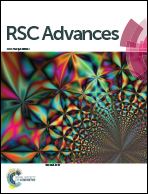Ultralong PtNi alloy nanowires enabled by the coordination effect with superior ORR durability†
Abstract
One-dimensional (1D) nanostructure with high aspect ratio is expected and experimentally proven as a promising candidate of catalysts with simultaneous high durability and efficiency. Due to the isotropic growth tendency of a face-centered cubic (fcc) structure and the complicated redox-alloying kinetics/thermodynamics; however, the synthesis of Pt-based bimetallic nanowires with a high aspect ratio remains a big challenge. In this study, we report the synthesis of ultralong PtNi nanowires via a surfactant-free method by taking advantage of the coordination effect to delicately control the reduction and alloying kinetics. The ORR electrocatalytic activities of the PtNi nanowires present a volcano-like trend depending on the Ni content with the Pt75Ni25 nanowires at the peak position, which can be attributed to the optimized electronic structure on the basis of the XPS characterizations. The electrochemical catalytic comparison between the nanowires and nanopolyhedrons further highlights the superiority of the nanowires as a high durability catalyst. The successful application of the coordination effect method in the fabrication of PtCo nanowires indicates its universality for creating alloy nanowires.


 Please wait while we load your content...
Please wait while we load your content...